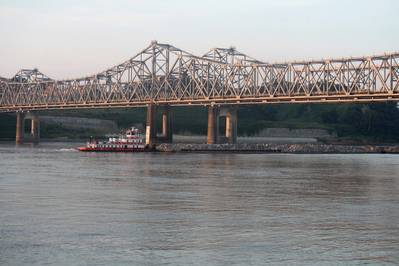Capital Construction Funds: A New Opportunity For Vessel Financing On The Inland Waterways
Recent changes have opened up the Capital Construction Fund program to owners and operators of vessels on the U.S. inland waterways.
Among the programs offered by the U.S. Department of Transportation through the Maritime Administration (MARAD) to promote the growth and modernization of the U.S. maritime industry, the Capital Construction Fund (CCF) program is one that has remained largely unavailable to the owners and operators of vessels on the inland waterways—until now.
Created by the Merchant Marine Act of 1936, the CCF program allows the owner or operator of an eligible U.S.-flag vessel to defer federal taxes on income from the operation of the vessel, depreciation of the vessel, and gain from the sale of the vessel, by excluding from taxable income any amounts from such sources that are deposited into a CCF account. Deposits in a CCF account can be invested in cash and cash equivalents, interest-bearing securities, and common and preferred stock, and the earnings from such investments are nontaxable while in the account.
Withdrawals from a CCF account are nontaxable if they are used for the construction, acquisition or reconstruction of a qualified U.S.-flag vessel or the retirement of the principal portion of debt incurred for such purposes. The tax basis of the new vessel is reduced by the amount withdrawn. Amounts deposited into a CCF account can remain in the account for up to 25 years.
The vessels for which such funds may be deposited into a CCF account have been broadly defined to include, with few exceptions, all U.S.-flag vessels constructed or reconstructed in the U.S. that are engaged in U.S. foreign and domestic commerce. However, qualified withdrawals from the fund have, until recently, been restricted to the acquisition, construction or reconstruction in the U.S. of U.S. flag vessels that are operated in the U.S. foreign, Great Lakes, noncontiguous domestic or short-sea transportation trades. The CCF program is also available to the owners and operators of vessels engaged in the fisheries of the U.S., but this part of the CCF program is separately administered by the U.S. Department of Commerce.
Within its original scope, the CCF program has clearly been a success. There is currently more than $2.5 billion on deposit in CCF accounts held by more than 140 fundholders. But the geographic trading restrictions on the vessels for which qualified withdrawals could be made effectively kept the CCF program from offering much benefit to the owners and operators of vessels engaged in domestic trade on the inland waterways.
That changed in a big way with the passage of the James M. Inhofe National Defense Authorization Act for Fiscal Year 2023. Section 3544 of the NDAA removed the geographical trading restrictions so that qualified withdrawals under the CCF program may now be made for the acquisition, construction and reconstruction of U.S.-flag vessels that engage in the “foreign or domestic trade of the United States.” The owners and operators of towboats and barges on the inland waterways, harbor service vessels and passenger and auto ferries throughout the U.S. are among the examples listed on MARAD’s website of who can now be expected to benefit from this expansion of the CCF program.
The expanded CCF program has the potential to benefit the owners and operators of vessels on the inland waterways in a number of ways. First, since the CCF program is not a grant program, it does not depend on the periodic and unpredictable authorization and appropriation of funding by Congress, nor does it depend on an applicant successfully competing against other applicants for the limited funds available within a specific grant program for a given year. Each fund in the CCF program is governed by an agreement between the fundholder and MARAD that is tailored to meet the specific needs and circumstances of the vessel owner or operator within the parameters specified by the applicable regulations. The funding for each CCF account comes solely from the fundholder.
In addition, there have been initial indications that the regulations that MARAD will develop to reflect the expanded CCF program may specifically include within the term “reconstruction” of a vessel the repowering of a towboat and applying new or refreshed coating to a barge. Repowering towboats is an ongoing process among the owners and operators of vessels on the inland waterways to enable them to handle larger tow sizes and to meet the scheduled increases in emissions standards from the U.S. Environmental Protection Agency. Applying new coatings to barges operating on the inland waterways is also a regular occurrence as a result of normal wear and tear during a barge’s economic useful life.
The transfer of vessels from one owner or operator to another also occurs with some frequency within the inland waterways system, so the funds in a CCF account could be used by the fundholder in a qualified withdrawal for the acquisition of additional vessels.
One form of financing that vessel operators frequently use to acquire vessels used on the inland waterways is for a financial institution to own the vessel with a lease, or charter, to the operator. The CCF program could be attractive to a financial institution that has a long-term plan to provide such financing by allowing it to defer income tax on the lease payments it receives and to make tax-free withdrawals to fund future vessel lease financings.
One factor that makes lease financing attractive to both financial institution lessors and vessel operator lessees is the availability to the lessor of the tax benefits that accrue from its ownership of the vessel. Because these tax benefits are part of the economic return the lessor receives from its investment, the lessor is often able to offer the vessel operator lessee a more favorable lease rate than the interest rate would be in a conventional loan arrangement. This is especially the case when bonus depreciation is available to lessors. In 2022 the bonus depreciation percentage was a full 100%, but under current law bonus depreciation decreases by 20% each year thereafter and will be phased out completely for property placed in service after December 31, 2026. Although there will still be tax benefits to lessors from vessel ownership, the loss of bonus depreciation could make the additional tax benefits provided by the CCF program of increased interest to financial institutions that intend to stay in vessel lease financing long term and to vessel operators looking for such financing.
Further expansion of the CCF program was proposed in late July by the introduction in the U.S. House of Representatives of H.R. 4993, a bill to extend the CCF program to marine terminal operators. The bill would allow marine terminal operators to deposit a portion of their taxable operating income into a CCF account and to use those funds on a tax-deferred basis to meet the costs of transitioning to zero and near-zero emissions cargo-handling equipment. Introduced by Representatives Mike Ezell (R-Miss.) and Troy Carter (D-La.), the bill has been referred to the Subcommittee on Coast Guard and Maritime Transportation of the House Committee on Transportation and Infrastructure.











